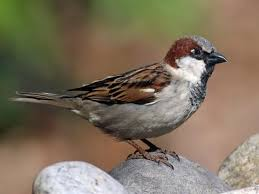Uttarakhand
Study on House Sparrows
- 29 Jul 2024
- 3 min read
Why in News?
Recently, a study conducted by the Wildlife Institute of India (WII) emphasizes the unique bond between house sparrows and villagers in the high-altitude regions of the Indian Himalayas.
Key Points
- The study found that the house sparrow populations in Uttarakhand migrate with the local people, leaving the deserted summer villages when the locals move down to their winter villages and returning when the villagers come back in the summer.
- The study aims to understand the altitudinal movements and adaptation of house sparrows to the cold climatic conditions in these high-altitude areas.
- Adaptations of House Sparrows to High-Altitude Conditions:
- House sparrow populations in Uttarakhand are found to occur at altitudes as high as 3,500 meters, which is unique.
- The study found that the house sparrows of the high-altitude villages are larger in body size as an adaptation to the cold climatic conditions, compared to sparrows of lower elevations.
- Conservation Efforts and Awareness:
- To make local people aware about sparrow conservation, nest boxes have been distributed in many places, including Purola, Rudrapur, and Haridwar.
- The study is creating extensive awareness among local people about the importance of house sparrow conservation, and many people are actively engaged in the effort, monitoring nest boxes and contributing to data collection.
House Sparrows
- Scientific Name- Passer domesticus
- Conservation Status- Least Concern on the Red List of The International Union for Conservation of Nature (IUCN).
- Habitat and Distribution:
- The house sparrow is widespread across the world, inhabiting every continent, except Antarctica, China and Japan. It is native to Eurasia and North Africa.
- It is the State bird of Bihar and Delhi.
- It is known to stay close to human habitations, and is therefore among the most commonly found bird species in urban cities.
- Some of the causes for decline in its population are as follow:
- Unfriendly architecture of our homes.
- The use of chemical fertilisers in crops.
- Noise pollution.
- Exhaust fumes from vehicles.





